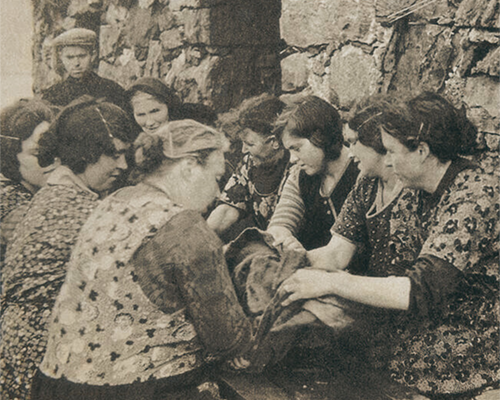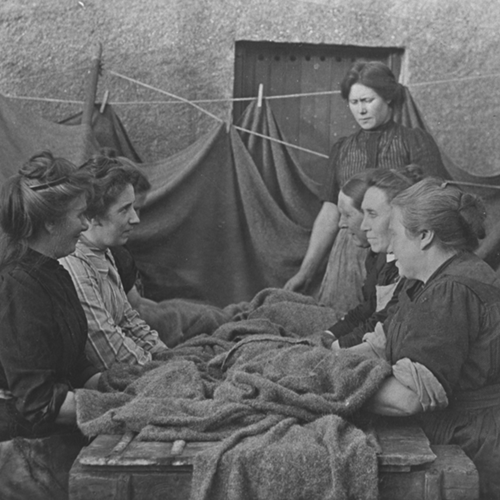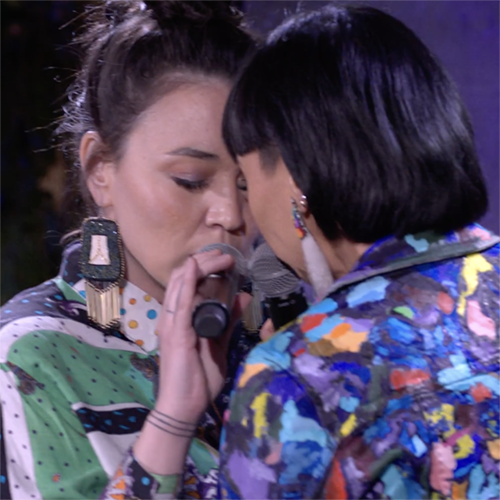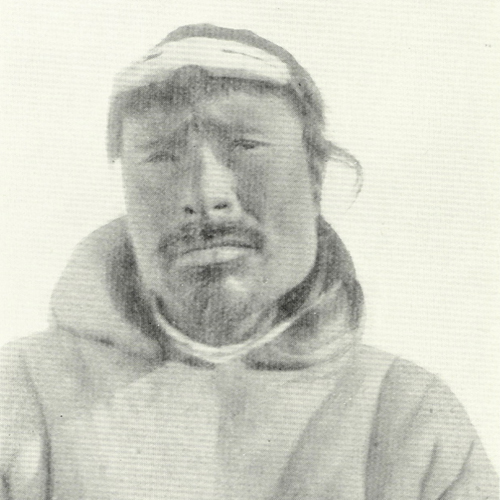When Traditional Music Leaves Home
by Catherine Madsen
 Why ethnomusicology? What does the study of music in its cultural and social context
add to the study of music in general?
Why ethnomusicology? What does the study of music in its cultural and social context
add to the study of music in general?
The farther you get from the concert hall and the commercial media, the more intimate music becomes. It belongs to mothers and babies, children playing, families on the road or around the campfire. Before heavy labor and farm labor were mechanized, it belonged to work crews, ships’ crews, people milking their cows. (Are there work songs anymore? Canadian songwriter Stan Rogers attempted one for the officeworker.) It belongs to a community that celebrates and propitiates and lampoons and laments together; it’s the music they make at home. Ever since the first collectors started notating folk songs about 200 years ago, this is the music they’ve been seeking, hoping to give it permanence in written and recorded form.
What happens when that intimate music leaves home? Does it still belong to its home community? In what sense can it belong to random others, even to those who find it revelatory? Does it belong to the whole world now, or does it no longer belong to anyone in particular? The people who made the music may have legitimate misgivings about what collectors will do with it. In the very act of preserving it, the collector takes the music out of its context: the forms are still there (to whatever extent the collector can comprehend them), but the intimacy is subtracted. Any ritual use is desacralized, perhaps even profaned. Out in the wider world the music can be appreciated for its unique sound and its beauty and power, but the home community loses control of it. Indeed the community may have withheld some of its music from the collector.
Of course people from the home community can bring the music into the wider world themselves. When an impoverished or marginalized culture finds a wider audience for its music, it gains prestige and admiration and a new source of income; it has incentive to take its place on the world stage. And since no culture is ever static, it starts borrowing and experimenting; a musician will swipe a good riff from anyone. Performance styles can change radically: Inuit throat singing, for example, is traditionally a game for two that ends in laughter, but Tanya Tagaq has made it a fierce and physically demanding solo art form. Tiffany Ayalik layers solo throat singing into multitrack vocals; Charlotte Qamaniq and Cynthia Pitsiulak of Silla and Rise work as a duo, but add instrumentals and electronic effects (and virtuosic raven sounds). Like Scandinavian kulning, throat singing remains as a tradition but has also evolved into an art form.
When a tradition becomes an art form, what remains of the intimacy? Are you answerable to your audience as a stage performer in the same way you were answerable to your children or your work crew or your cows? How are your fans different from your family and friends? What’s the psychological and moral difference between calling your cows and getting a response, and calling to the souls of urbanites and tourists and getting applause? How do you prevent what was originally “gift labor” (in Lewis Hyde’s illuminating term) from becoming just another commodity? If authenticity doesn’t mean the static preservation of a style, is it actually an attribute of the performer? Is there some quality of being-a-real-person that authenticates the music and survives the transition from the village to the stage?
In singing to strangers, especially in an anonymous urban setting, you have to make them notice you. The temptation is to make a splash, to tap into some trendy or transgressive style. The pretty Swedish courting song “Fager som en ros” (Fair as a rose), sung straight by collector Miranda Samuelsson here, becomes faintly menacing as handled by black-metal artist Myrkur. Yet often the most direct route to the audience’s attention is simply being at home in the material and making no apologies. Norwegian traditional singers cultivate a skill they call fremdrift—intensity, impetus, drive, artistic authority. This doesn’t mean force or volume; Kim André Rysstad employs it very subtly in this wedding song. (Rysstad's folk albums are Tak Hardt Uti Hand, Or Setesdal, and Villfarande Barn.) It’s a way of putting yourself absolutely at the service of the music. A “stev” (a “stave” or four-line lyric) from the Telemark region of Norway puts it this way:
Å vi du hava meg te å kvea,
so ska eg kvea av største glea.
Og eg ska kvea so vent fyr deg
at du gløymer Gud og du gløymer meg.
O if you will have me sing
then I will sing with the greatest pleasure.
And I will sing so beautifully for you
that you forget God and you forget me.
There’s a certain interplay of intimacy and remoteness here: the mark of a personality that can’t be violated or bought.
“Songs are thoughts,” said the Netsilik shaman and poet Orpingalik, “sung out with the breath when people are moved by great forces and ordinary speech no longer suffices.” Weather, hunger, duty, entreaty, family joy, family pain, play and mourning, exhilaration and exhaustion, gratitude and awe: these are the origins of intimate music. Why ethnomusicology? To find the music at its point of origin; to bear witness, in a social and political and economic culture apparently bent on convincing us we’re never at home, that the great forces endure.
Resources
Click the links below to learn more about people and places mentioned in the article.
About the Author

Catherine Madsen is a writer, singer and folk harper now living in Michigan. The three years she spent in Fairbanks as a child (1962-65) were a turning point in her life, and she established the Circumpolar Music Series as a gift of gratitude.







